Key Steps to Cleaning Southern California’s Air
Diesel Class 8 trucks run seemingly tail-to-nose from the Ports of Long Beach and Los Angeles to the Inland Empire in Southern California. There, the cities of Ontario, San Bernardino, Rialto, Riverside and others have seen massive warehouses built for storing and transferring goods bound for retailers and then on to consumers. On their 100+ mile round trip, these trucks burn diesel fuel that damages the ozone, spews out noxious particulates that seek out lungs and eyes along with oxides of nitrogen that help create smog, along with other nasty—and toxic—unpleasantness. On hot days it can be felt weighing you down, your skin is sticky, and is so thick it seems possible to touch.
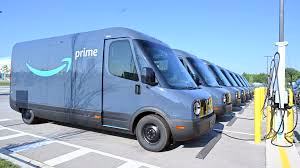
Almost all of those trucks run on diesel, but change is coming. More and more, especially the smaller “last mile” trucks, are powered by electricity. FedEx, Amazon and others are making the switch to electric power, as are school buses and garbage trucks. Even the U.S. Post Office will be converting a sizeable portion of its fleet of electric vans.
There is no debating the need for trucks of all sizes, from the semis that roam the country’s highways to smaller box trucks, delivery vans and the common pickup. As Jimmy Hoffa, the late president of the International Brotherhood of Teamsters said, “If you got it, a truck brought it to you.”
It will take time, investment and forward-thinking politicians and trucking companies, but every diesel burning truck that can be removed from the roadways will aid in cleaner air.
A Significant First Step
A step in the direction of cleaning the air in Southern California has been made by the Joint Electric Truck Scaling Initiative (JETSI). The lead project partner, NFI, a third-party supply chain provider with headquarters in New Jersey. NFI constructed an all-electric port drayage facility in Ontario, California. On what was a dirt lot a couple years ago now stand 38 DC fast chargers sourced through Electrify America. Jim O’Leary, NFI vice president of fleet services, said the “enthusiasm and commitment (of the partners) have been indispensable and together, we are revolutionizing the trucking industry and paving the way towards a cleaner, more sustainable future.”
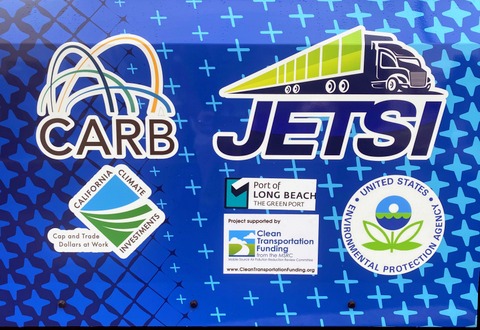
Liane Randolph, chair of the California Air Resources Board, one of the project’s state funders, said: “Drayage trucks travel short distances between ports and regional warehouses, making them ideal candidates for zero-emissions technology, and this project in Ontario is an exemplary model for the future of freight transport.”
The JETSI project is the first battery-electric truck project jointly funded by the California Air Resources Board and the California Energy Commission. The Mobile Source Air Pollution Reduction Review Committee of the South Coast Air Quality Management District also contributed towards the JETSI project.
The facility is nice, but it means nothing without a fleet of battery-electric trucks plugging-in on a daily basis. Initially Daimler Truck North America’s Freightliner eCascadia and Volvo Trucks North America’s VNR Electric trucks will make-up a fleet of 50 battery-electric Class 8 trucks in the JETSI project.
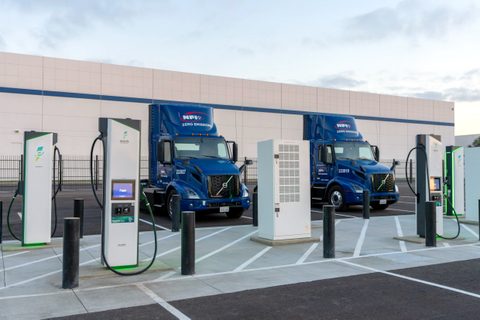
The NFI facility also has a repair and service center, fully equipped with trained staff to keep the initial 50 trucks on the road. The trucks typically run two port pickups per day, per truck, for an average of 220 miles driven before being recharged.
The potential of reducing greenhouse gases and emissions is encouraging. Just these 50 trucks and their two, 100+ mile daily round trips will approximately eliminate 4,400 metric tons (Note: 2,000 pounds is a ton, while 1,000 kilograms is a metric ton) of greenhouse gas emissions yearly, along with 2.45 tons of pollutant emission reductions and displacing more than 2.75 million gallons of diesel over the coming five-years.
For perspective, more than 22,000 trucks are registered to serve the ports of LA and Long Beach. These 50 are part of a growing number of zero emission trucks that are shrinking the diesel portion of that number. Regulations are in place calling for all new trucks added to that registry to be zero emission (either battery or fuel cell powered).
The JETSI Project All-Electric Trucks
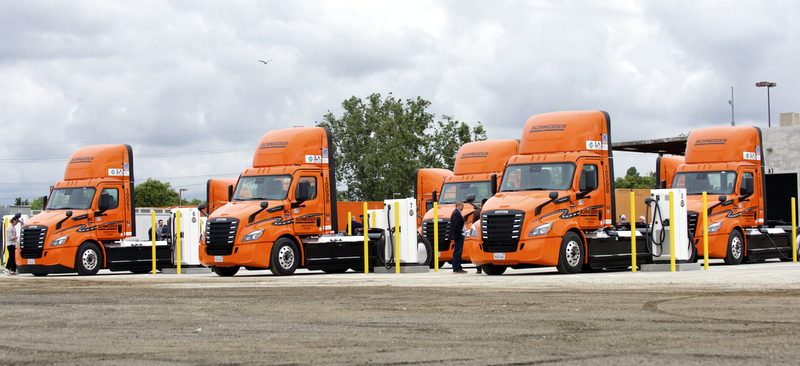
The Freightliner eCascadia is available as a single or tandem eAxle.
Single Drive
Long Range: 230 miles
Standard Range: 155 miles
Charge Time: 80% in 90 minutes
Charging Power: 190kW with single port; 270 kW with dual ports
Total Gross Weight (TGW): 65,000 pounds
Performance: 320 horsepower (HP) or 395 HP
Tandem Drive
Range: 220 miles
Charge Time: 80% in 90 minutes
Charging Power: 190kW with single port; 270 kW with dual ports
TGW: 82,000 pounds
Performance: 425 horsepower (HP) or 470 HP
The Volvo VNR Electric is available in tractors with 4×2, 6×2 and 6×4 configurations.
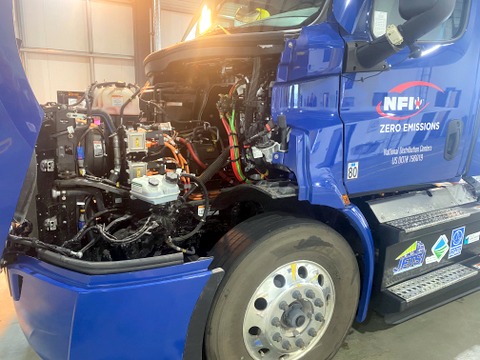
4×2
Range: 175 miles
Charge Time: 80% in 90 minutes
Charging Power: Up to 270 kW
TGW: 66,000 pounds
Performance: 455 horsepower HP
6×2 and 6×4
Range: 275 miles
Charge Time: 80% in 90 minutes
Charging Power: Up to 270 kW
TGW: 82,000 pounds
Performance: 455 HP
Notes:
- Both brands have regenerative braking that returns electricity to the batteries when coasting or braking.
- Top speed for both is between 65 and 68 miles per hour
Additional All-electric, Class 8 Trucks
There are several other manufacturers building all-electric Class 8 semi trucks. While not part of the JETSI project, they offer the same zero emission solution to heavy hauling.
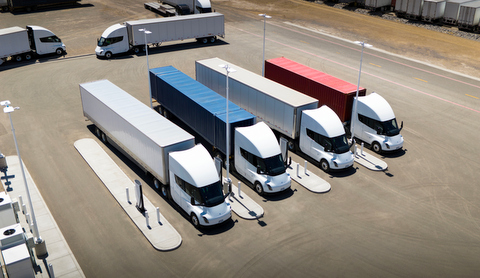
Battery Electric
- Tesla Semi
- Nikola TRE
- Kenworth T680E
- Peterbilt 579EV
- BYD 8TT
- Lion Electric LION8T
- Battle Motors LNT
- Windrose
Hydrogen Fuel Cell Electric
- Nikola TRE FCEV
- Hyundai Xcient
- Peterbilt 579HFC
- Hyzon HYHD8
The Urgent Need To Reduce Emissions
Air pollution is pervasive in any metropolitan area, but the corridor between the Ports of Long Beach and Los Angeles, and Southern California’s Inland Empire is among the worst in the country. Idling diesel trucks at the ports waiting to be loaded and unloaded are matched by trucks idling at the warehouses in the Inland Empire. All that traffic has created a stubborn and dangerous air quality problem for residents of the region. Despite of emissions improvements in trucks over the past two decades, respiratory health problems, including asthma, bronchitis and cancer persist. Children and the elderly are the most susceptible, but everyone and anyone that breathes is an unwitting target of this lousy air.
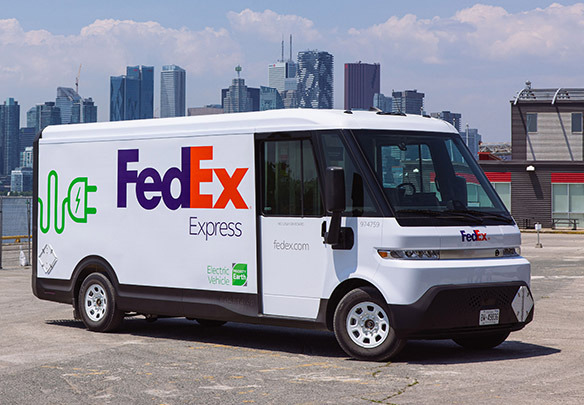
Clean air is personal as it affects people of all races, genders, and ages. Black, Latino, immigrant and low-income neighborhoods are often where these warehouse facilities are based, placing an added burden to their health.
The JETSI project may be a test, but the outcome is already known. These 50 all-electric Class 8 trucks are only the beginning of the solution to air pollution in this part of California. It is certainly not enough by any means, but the upside to replacing diesel trucks with zero emission battery or fuel cell electric trucks is too tantalizing to imagine. How much cleaner could the air be if, instead of 50 trucks, it is 500, 1,000 or 10,000. The lessons learned from this project will encourage ports and truck fleets from around the country, and the world, to ditch their dirty diesel rigs for zero emission electric trucks.
Addendum
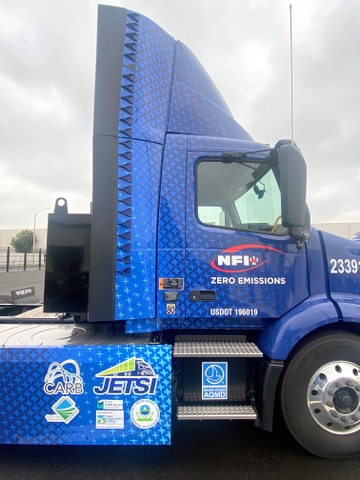
After we attended the JETSI, the good news of freight electrification in Southern California has continued. Several charging depots geared to provide the high-powered charging needed for these trucks have opened in the corridor between the ports and the Inland Empire. The number of zero emission trucks running in the area is now in the hundreds and should top 1,000 soon. The federal EPA awarded $411 million to the Port of LA to add more zero-emission equipment for its cargo handling operations. An additional 250 zero emission trucks as well as 300 chargers will be funded by the grant. This grant followed an earlier $500 million from EPA to the South Coast Air Quality Management District, which will be used to get further zero-emission trucks, delivery vehicles and locomotives into operation.
In another effort at increasing the number of zero-emission trucks serving the ports, the “green bank” Climate United, working with the charging developer Forum Mobility, has created a dedicated $250 million fund. The intent is to provide low-cost financing to smaller fleets and owner operators for purchase of up to 500 zero-emission trucks.
Make sure to opt-in to the Clean Fleet Report newsletter (top right of page) to be notified of all new stories and vehicle reviews.
Story by John Faulkner, with additional information from Michael Coates. Photos by John Faulkner and the manufacturers.

4 thoughts on “News: All-Electric Semi-Trucks Making a Difference”